
Ben Eine has been spending some time painting in Mexico City. Delusional is his latest piece. Check out more from his trip on the White Walls Gallery blog.
Photo courtesy of Eine

Ben Eine has been spending some time painting in Mexico City. Delusional is his latest piece. Check out more from his trip on the White Walls Gallery blog.
Photo courtesy of Eine

Of course Ben Eine made his way to Miami this month, and he kept busy. Here are just a few of his new walls…




Photos copyright Gareth Gooch

Mike Pearce was in Miami last week taking photos of the murals getting painted. As it has been over the past few years, Wynwood was overrun (in, I think, a good way) for about a week with artists working outdoors on any wall they could get permission to paint or get away with painting. Here are a few of Mike’s pictures of the artists at work…


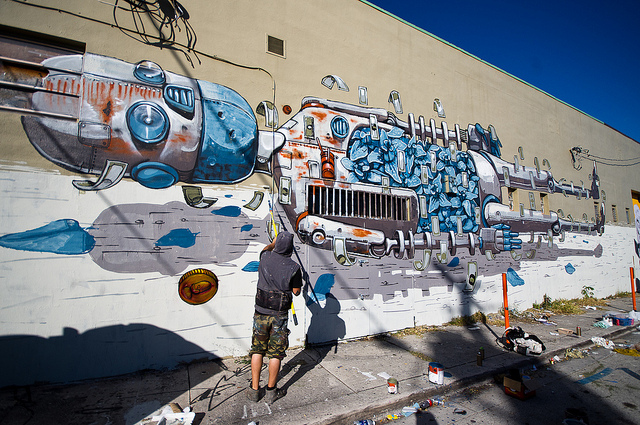
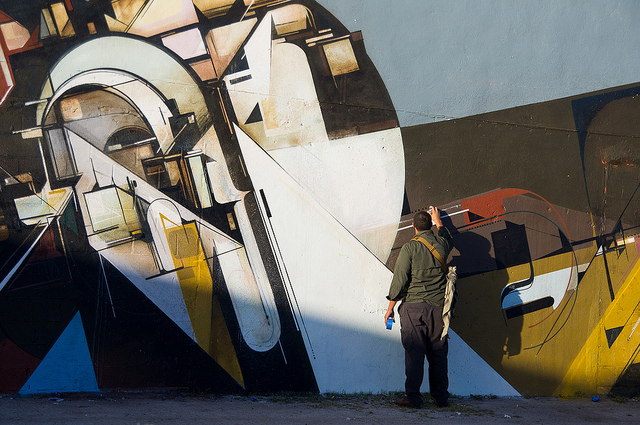

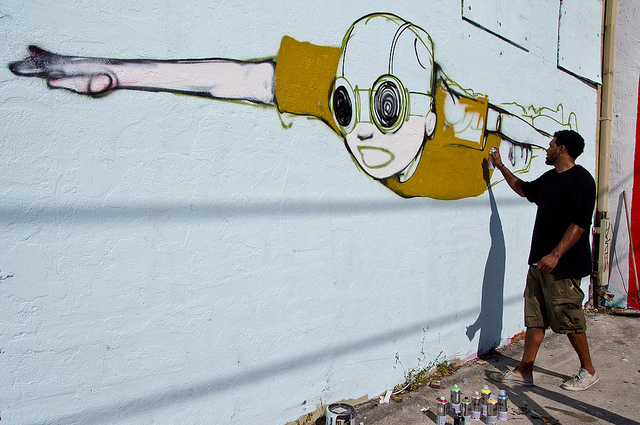
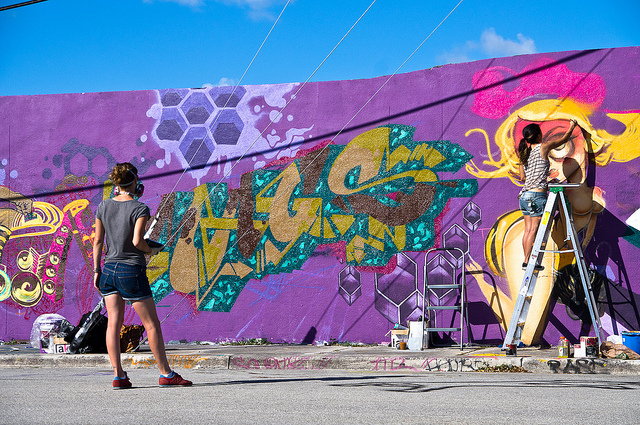
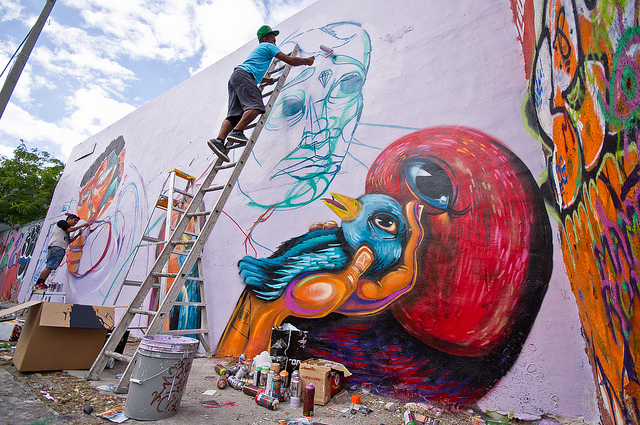
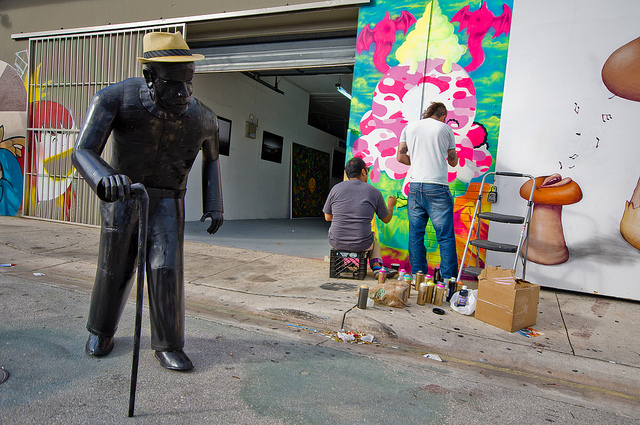
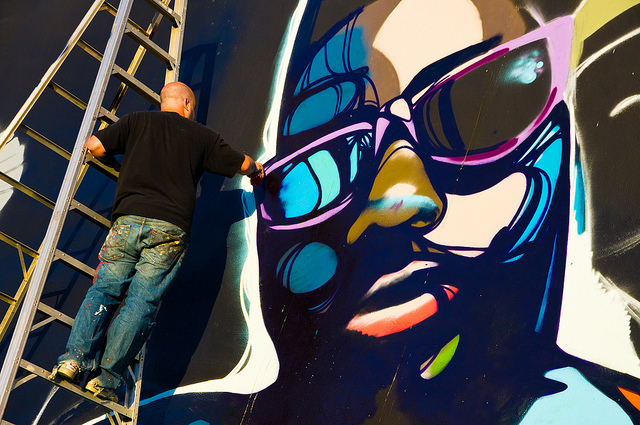
Photos by Mike Pearce
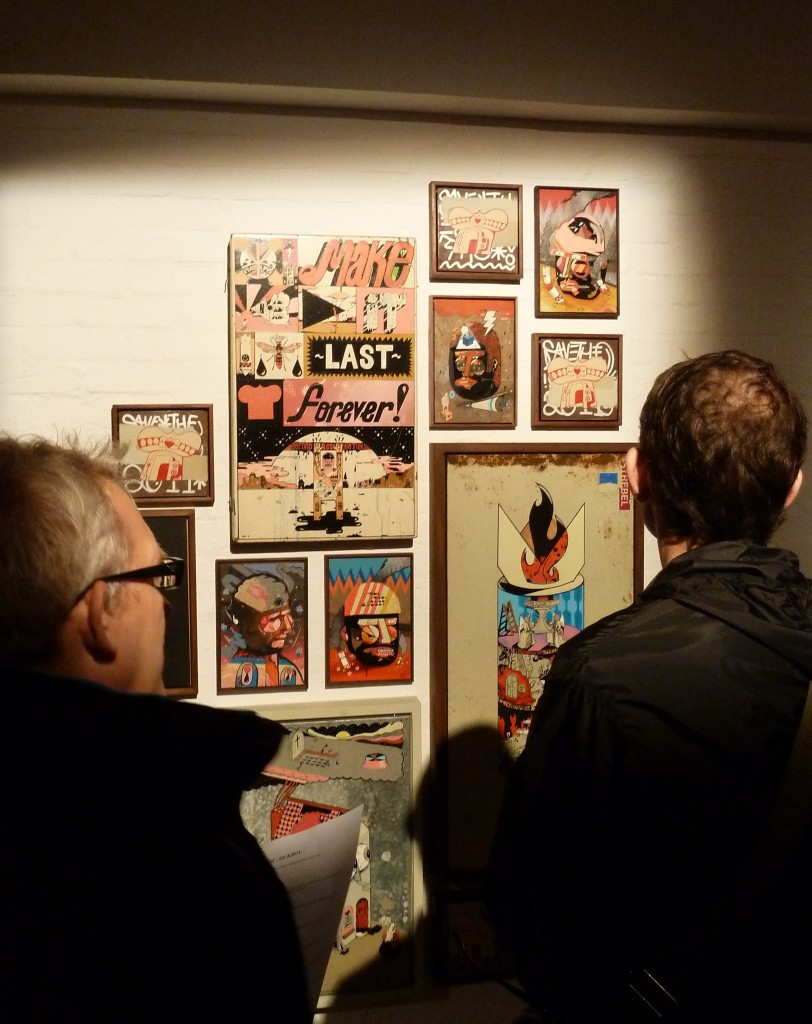
Despite an afternoon of heavy rain last Thursday, a large crowd was on hand to watch security struggle (literally) to open the doors of the Sickboy’s 3 day London show – Heaven & Earth. However that delay, plus the relatively slow name checking procedure, mattered for no one as they caught a glimpse of the collection of visual delights that lay beyond.
First up, upon peering into the large open room your eyes were drawn to a caravan standing proudly in the far corner. Kitted out in the famous red and yellow Sickboy colours, it soon became apparent that this was actually the bar dishing out a variety of booze, and not surprisingly a large queue quickly formed.
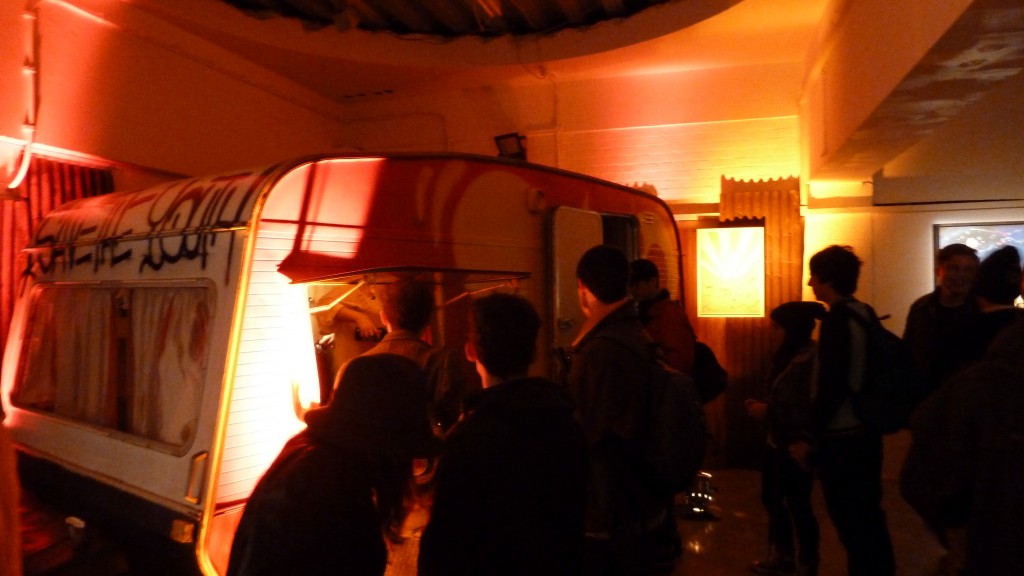
But whilst your gaze initially descended upon the brightly coloured mobile holiday home come drinks dispenser, it was impossible to ignore the plethora of meticulously-detailed paintings, riddled with their religious undertones that covered the walls. Appropriately titled with names such as “King of Undesire”, “Critically Zen”, “Forget” and “Forgiven” these colourful masterpieces encompassed Sickboy’s own notion of heaven and earth. Fantastically detailed with sickly looking characters, rockets, angels, tags, trains, and the odd temple, this body of work was exceptional and a perfect example of how a street artist can translate their work from street to gallery. In fact many other artists should take note!
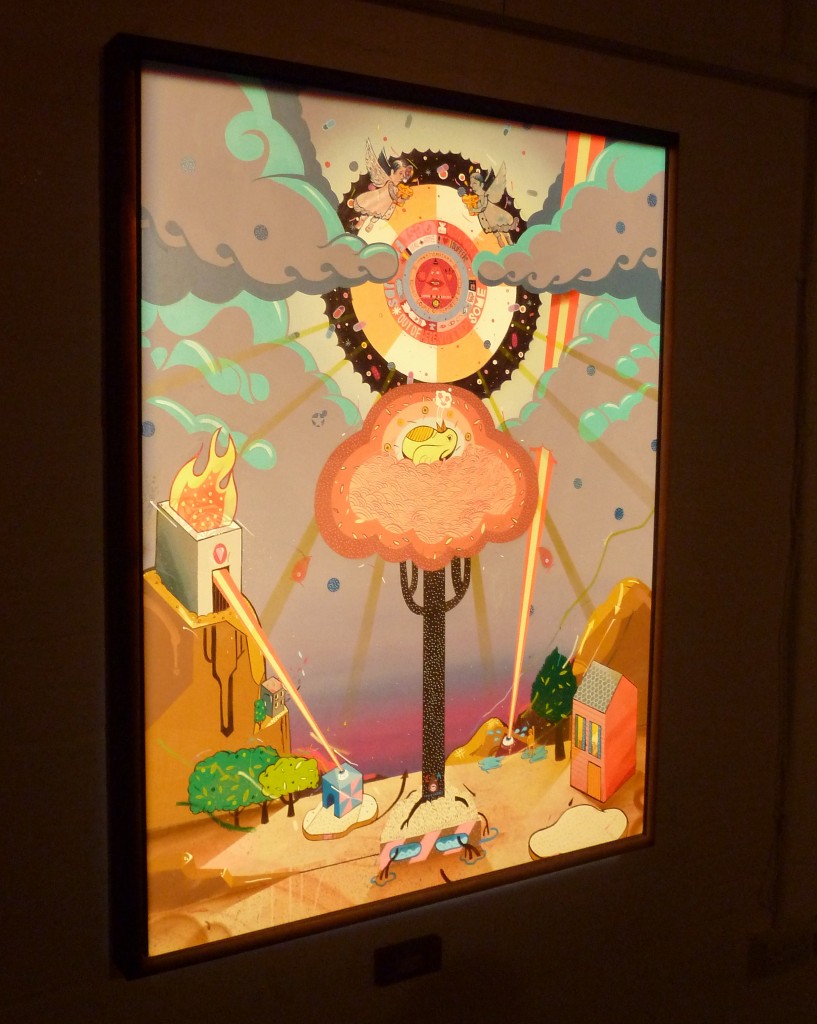
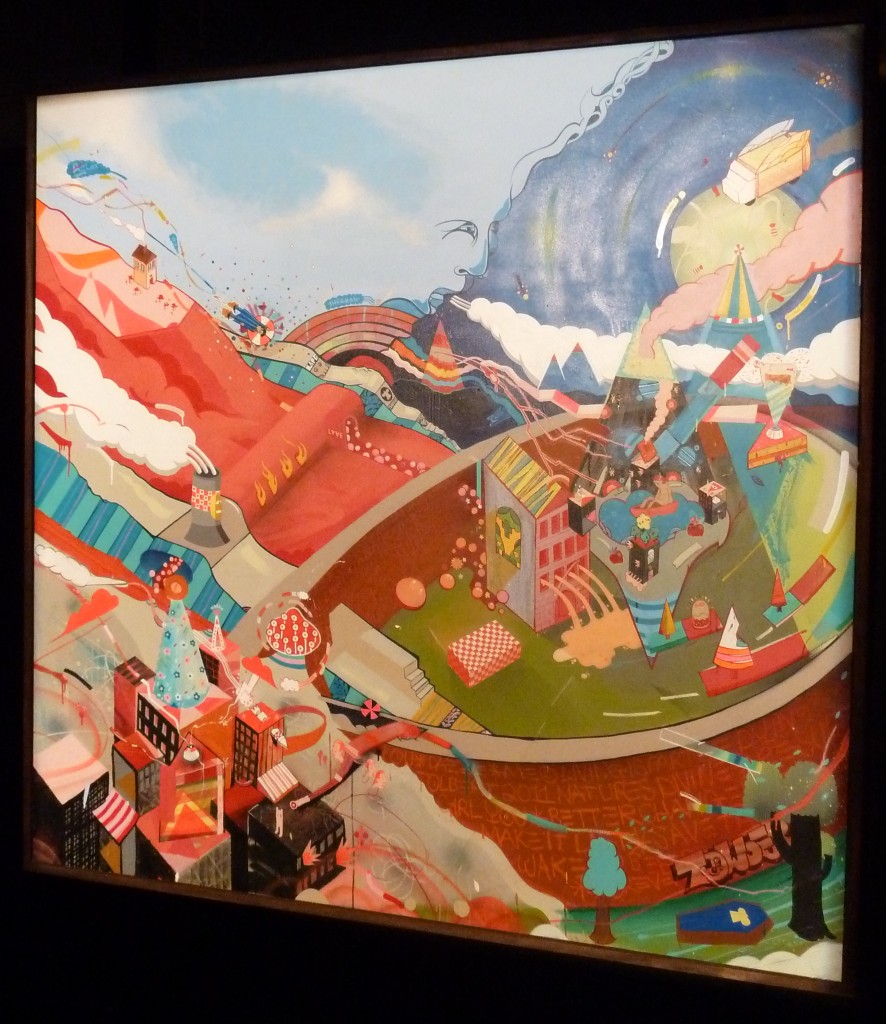
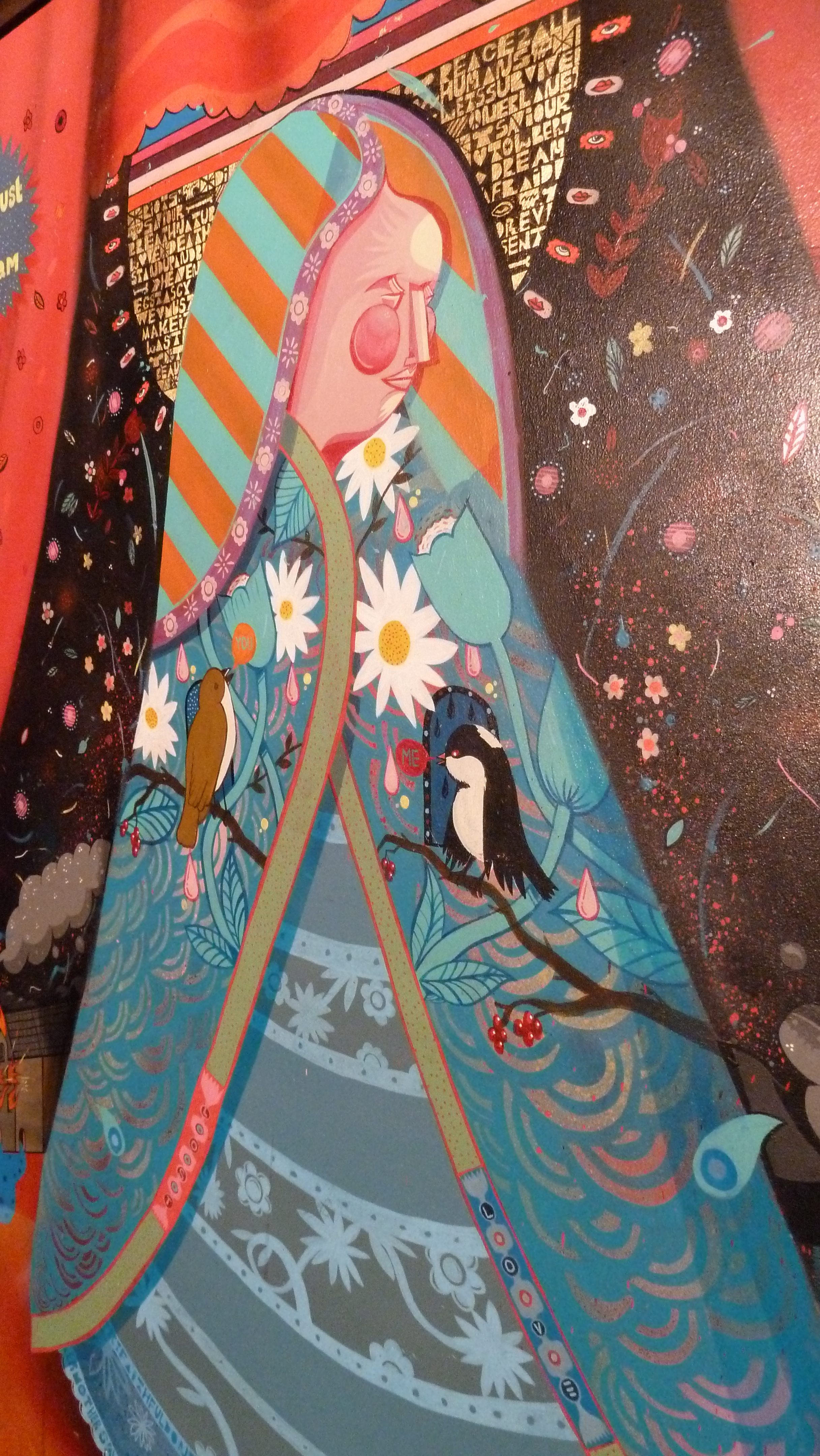
Prior to the show Sickboy allowed his website visitors to confess all, and get any sins they may have committed off their chests. Promising to display each and every one, these unedited misdemeanours were projected onto a big screen for all to read. I rather enjoyed the West End drug dealers who admitted to lacing their wares with a bit of laxative to ensure a messy end for their clients. And of course there were plenty of sexual references to teachers and their daughter’s, girlfriends and their mum’s.
For all those last minute sins, or for those that just couldn’t think of one before the show opened, a large confessional booth equipped with a priest was on hand. Although to be honest I am not sure how many visited the booth to confess or to just explore and view more of Sickboy’s artwork which adorned both the outside and in. Maybe if the priest was hidden behind a screen some may have been more forthcoming, I certainly found it a little weird to just be stood in a small room with another bloke, let alone go ahead explain any times I may have misbehaved.
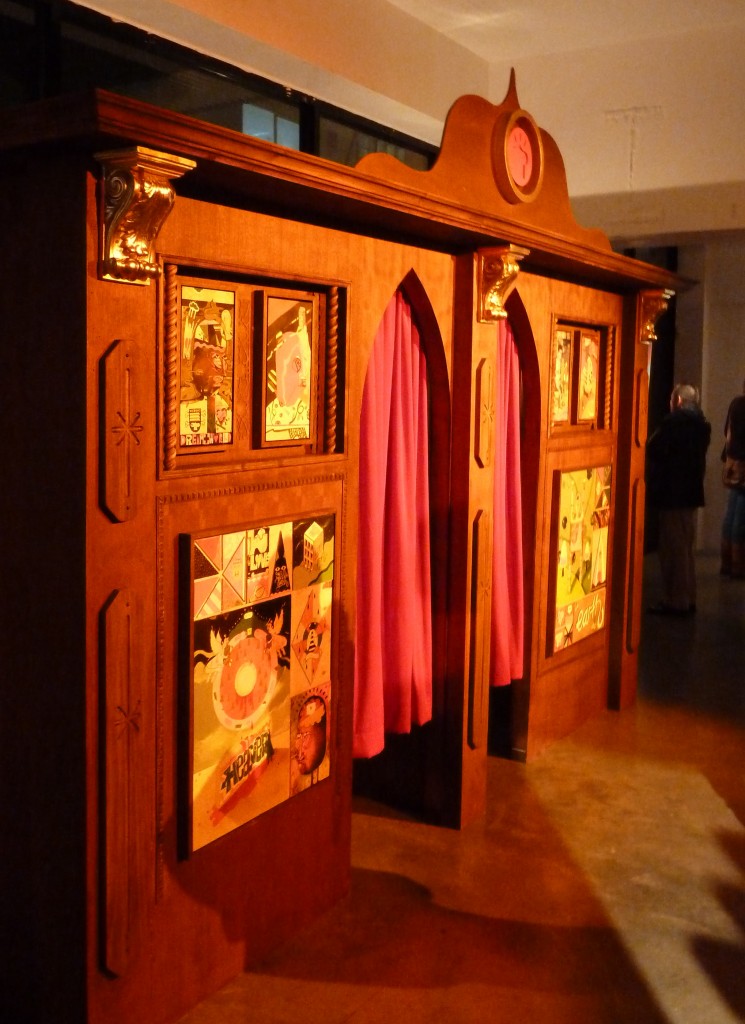
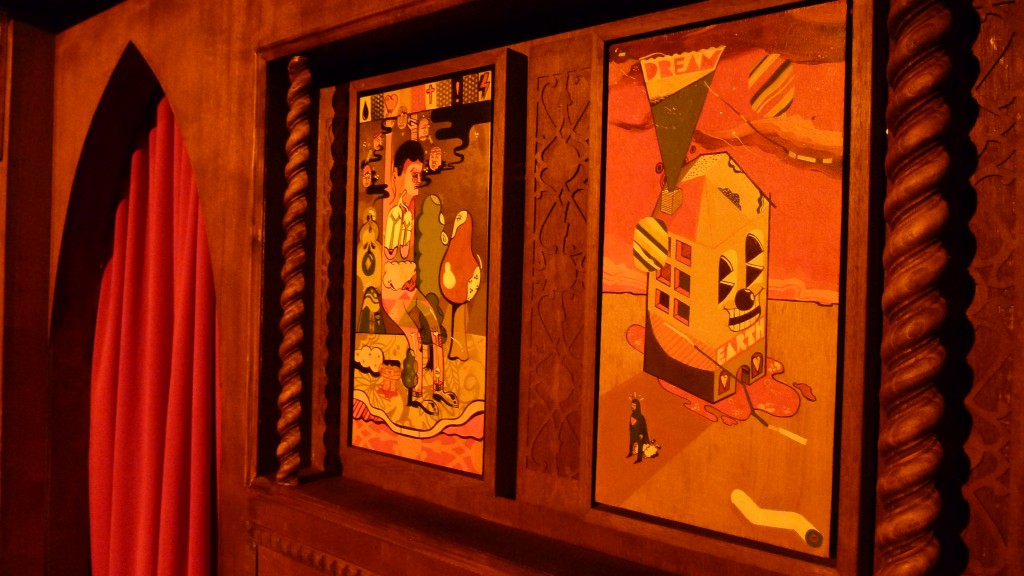
Whilst the show was billed as one based around four major installations, I personally felt they seemed to blend into each other and consequently it was hard to see each as individual entities. However I have to admit that that was not necessarily a bad thing and the fourth and final of these installations was perhaps the one I was most looking forward to – a collaboration with 12 of Sickboy’s fellow artists and friends. It came in the form of a series of wooden bricks, a medium Sickboy has visited before, which were then stacked to form a wall. Designs and editions varied but I was most taken by the Word to Mother and Paul Insect collabs and a couple of the Conor Harrington’s. From a sales perspective the installation certainly seemed popular, but it may have just been the due to the sheer size of the space that I felt it became a little lost, maybe it was the fact that the bricks were not over the top. Nevertheless I really liked the concept and execution of the individual bricks.
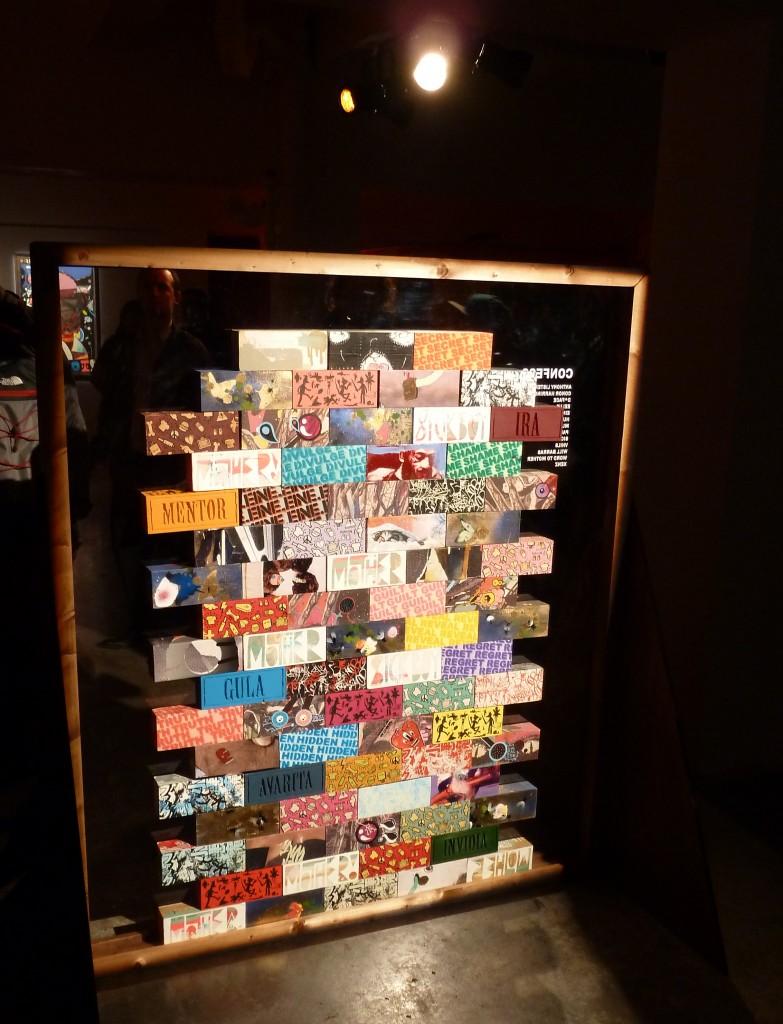

In short this was Sickboy at his best and by far my favourite show of the year so far, and I am sure that many in the packed out venue will agree. This was street art meets gallery, street artist becomes fine artist. It’s just a shame it only lasted 3 days.
For more information about Sickboy head over to his website, and make sure you check out the gallery section as Ian Cox has done a much better job, that I have, of taking photos of each of the pieces from the show.
Photos by Shower.
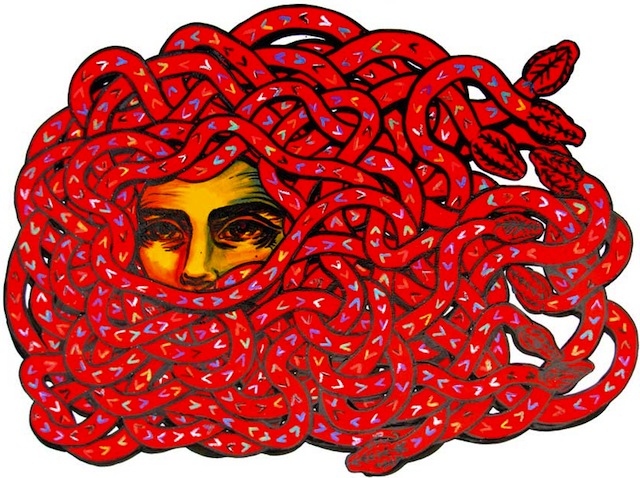
The Tubú community is an indigenous group of families now living in the city of Bogotá, Columbia. Tubu Community is a project to help raise money to build a new home in Bogotá for a Tubú family. To learn more about the Tubú people, you can watch this video or read this info.

At their webstore, Tubu Community has begun to sell prints and original art by South American and European artists to help with the effort. 100% of the proceeds from these sales go to the Tubú people. Blu, Bastardilla, Buytronick and Stinkfish have contributed original art and Eine and Stinfish have contributed prints, including a new 7-color screenprint by Stinkfish. Expect more products to be added to the webstore in the future.
Photos courtesy of Tubu Community
Best known for his iconic red and yellow ‘Temples’ sprayed onto walls and wheelie bins worldwide, Sickboy returns this Thursday (November 3rd) with only his second major London solo show. Personally I’m quite suprised it is only his second!
Inspired by semiotics and symbolism, Renaissance paintings and the surreal landscape workings of artists like Hieronymus Bosch, this new body of work promises to demonstrate “a deeper development of the artist’s visual vocabulary.”
A celebration of earthly sins and heavenly fantasies, the show is to be comprised of four major major installations, including a walk-in confessional booth and an additional exhibit of confessions from members of the public anonymously revealed before the show.
But for me I am most looking forward to seeing Sickboy collaborating with a who’s who of eminent artists on a third element; D*Face, Eine, Anthony Lister, Paul Insect, Vhils, Conor Harrington, Xenz, Word to Mother, Will Barras, Eelus, Mudwig and Hush.
With the final surprise installation to be unveiled on the opening night, this show sounds like one not to miss. But be quick as it only lasts 3 days, located at Dray Walk, 91 Brick Lane, and ends on Sunday 6th November!
For a bit more info about the show and for those of you who would like to know more about Sickboy then I recommend 3 interviews he has recently completed with Londonist, The Playground and Zeitgeist Magazine.
Video courtesy of Sickboy. Photos by Viktor Vauthier.
We’ve been coming upon some newly-painted shutters these past few weeks. Here’s a sampling:
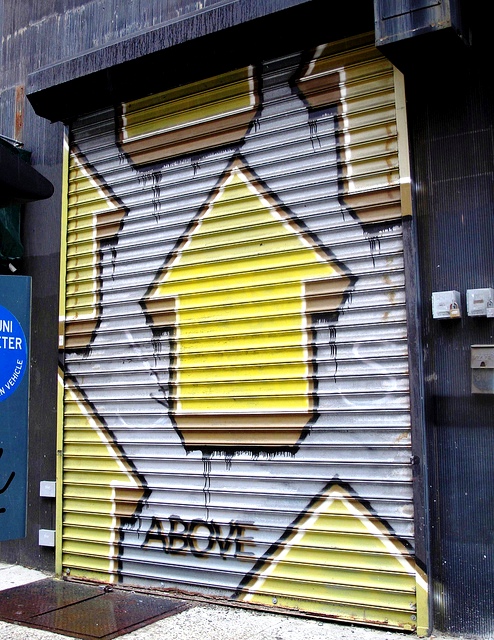



This week sees the opening of Autumn’s most high profile street art “exhibit” at The Cumberland Hotel in Marble Arch. I say exhibit loosely since Urban Contemporary is a ten day show culminating in the 150 works being auctioned off by Dreweatt’s on October 10. As usual, there is a mix of crap and some rare works that haven’t been seen in a while. The two that stood out for me is JR’s Adama, Montfermeil, Portrait d’une generation (2006) and the Charming Baker Panda Boy Remix (2007). Not only is the piece an early Baker, but this is also the first time (I cannot find evidence to say otherwise) one of his works has cropped up in the secondary market. Other artists in the show include D*Face, Barry McGee, Shepard Fairey, Banksy, Blek le Rat and Eine.
The show opens September 30th at The Cumberland Hotel in Marble Arch.


All Images courtesy of Dreweatt’s Bloomsbury
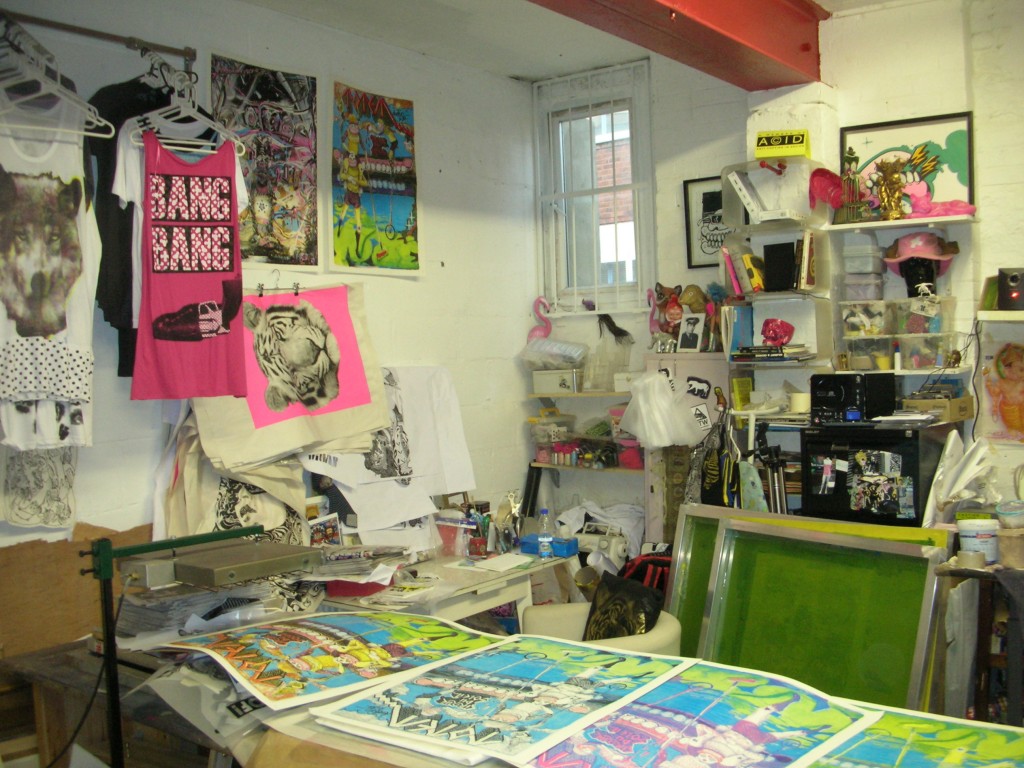
On a hot summer’s day, about a year ago, I headed to High Roller Society for the second in a series of three workshops on the art of printing. I was particularly excited as this session covered the subject of screenprinting, a technique I actually knew little about. For me screenprinting was nothing new, in fact for anyone with an interest in art, let alone street art, it should be nothing new. But I will openly admit my knowledge on the process behind it was lacking.
Whilst I was eagerly anticipating the workshop itself, I was equally interested in meeting printermaker extraordinaire, Aida. Starting out from her mum’s bath, which she claims she ruined, Aida began producing her own clothes over a decade ago. Now running her own successful brand, Brag Clothing, alongside lecturing at the London College of Communication, Aida is perhaps equally famous for her work with some of the UK’s leading street artists. A list that includes the likes of Lucas Price, Sweet Toof, Sickboy and Kid Acne among others.
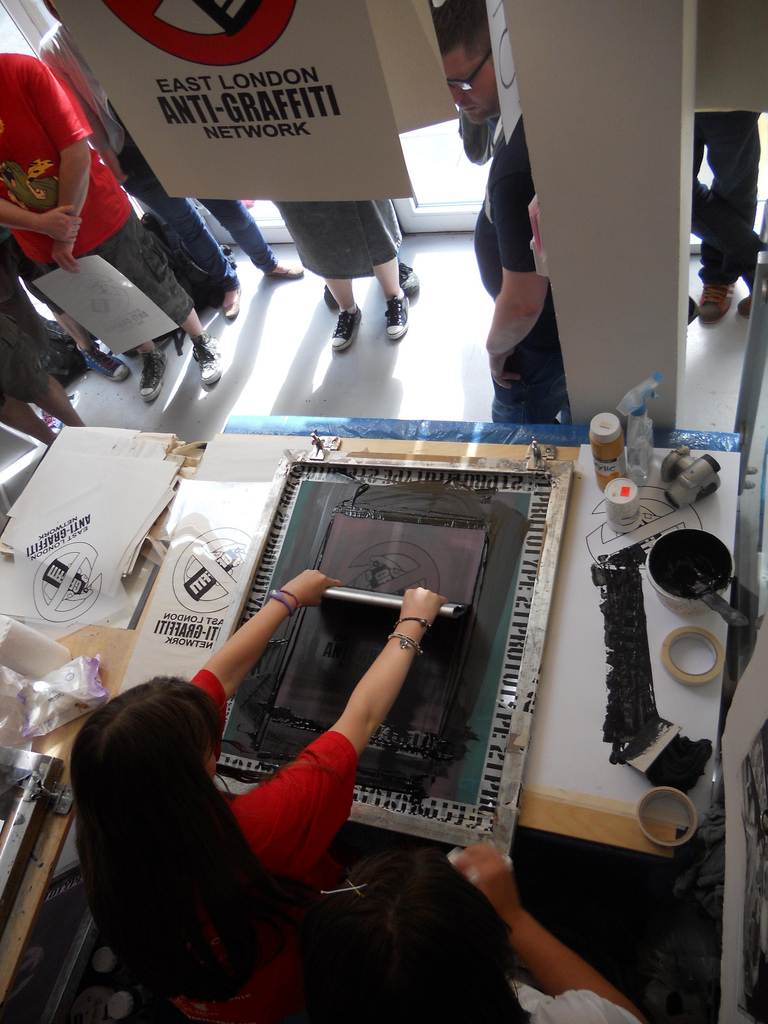
Surrounded by tables of printing equipment including her trusted squeegee, Aida began the workshop in earnest. Her passion and extensive knowledge kept the audience captivated from the first minute whilst she covered everything from producing screens and mixing inks to actually getting hands on, with everyone having the opportunity to pull their own print. It was a thoroughly enjoyable afternoon and I now view screenprinting in a completely different light. The skill, attention to detail, and creativity needed to be successful is amazing.
Following the workshop I was eager to catch up with Aida again and discuss screenprinting further, including its relationship to street art. It may have taken me a year but it was definitely worth it. Not only is Aida’s studio an Aladdin’s cave of printed wonders but it was refreshing to sit down and hear her opinion on a variety of subjects. I often think that the process of screenprinting and the printer themselves are forgotten, you may have a wall of prints yourself but have you ever thought about what goes into producing them? Hopefully this interview goes some way to answering that and you find it as interesting as I do.
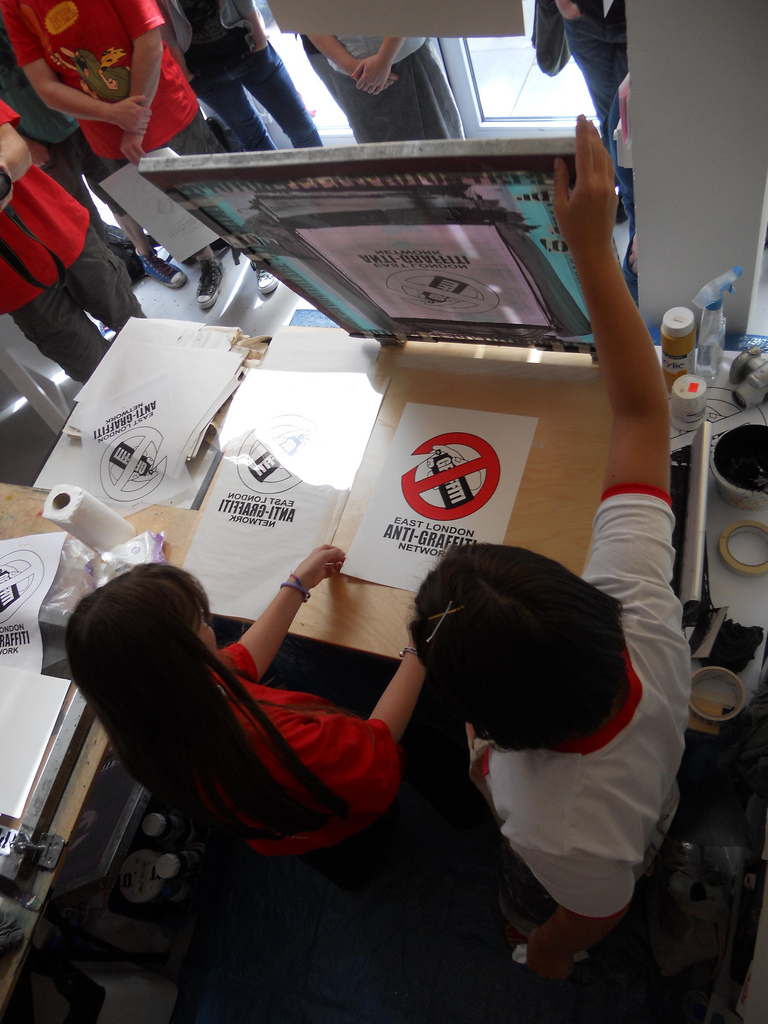
Shower: How did you did you get into screenprinting?
Aida: I got into screen printing when I was about 18. I had seen it done before and at the time my work was quite photographic. And I liked the fact you could make multiples of something and change it.
But I suppose it depends who you are though. Most people that I know that have got into screen printing, are people who enjoy some sort of learning through process, and most produce work that actually lends itself this method of printing. However the people I know who are successful at screen printing were screen printers first and became an artist second.
How did you get involved in street art and the artists who you work with?
I actually didn’t know anything about street art up until about 3 or 4 years ago. I had my shop in Brick Lane and I just made clothes in my workshop downstairs. I just loved printing and I used to make loads of stuff – clothes, prints, canvas’s, and obviously being in Brick Lane I used to get loads of street artists hanging around. It is a great place to showcase work, it’s amazing.
The little street I was on was covered in quite a bit of graffiti and the artists used to come to the shop. I didn’t know these people whatsoever; it was just bizarre that they used to just approach me. I first got approached by a few to paint next to my shop, I didn’t know who they were so I researched them a little bit and reluctantly let them do it.
So I suppose I just got into it that way, and next thing you know, I had people like Kid Acne coming in and saying “Oh your clothes are really cool, did you print these? The colours are so good. I want you to do a print.” You just got a phone call here and there and that was it. To be honest, I still don’t know a lot of people in street art, it’s mainly just the people I work with.

So a lot of it was through word of mouth?
Yeah, word of mouth. And through the clothes and through the quality of the print. I think it’s a relationship really between myself and the artist.
Can you explain to me a little about that relationship? How do you take an original and produce a print?
It depends who you work with. For example, for a project like Safewalls, both Glenn [Anderson] and Sweet Toof wanted a full reproduction of the work. Due to the amount of colours I opted to cross between spot colours like flat colours and process which is CMYK – cyan, magenta, yellow and black.
If you haven’t been printing for a while it’s a really difficult process to do because you have different varying sizes of dots, inks are mixed, and I like to mix mine from scratch so I can control the amount of CMYK in relation to each other. That’s one way.
At other times, a lot of other people I’ve worked with like to come into the studio and draw directly onto drafting film. You have two light fast pens and they draw sporadically, often improvising. But personally, I think the best way and the most successful prints that we have done are the ones where the artist has worked directly, hand drawing work that is transferred directly onto the screens.
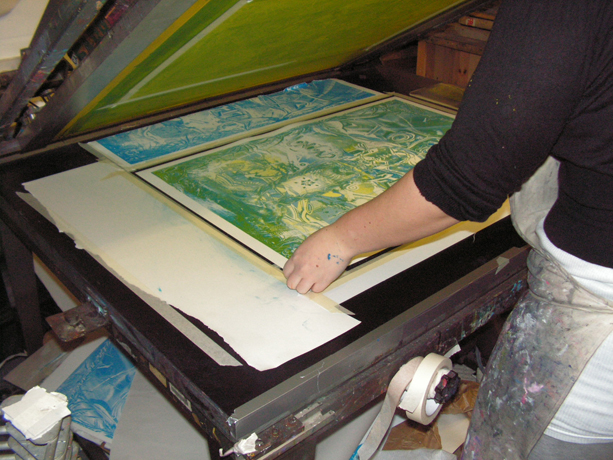
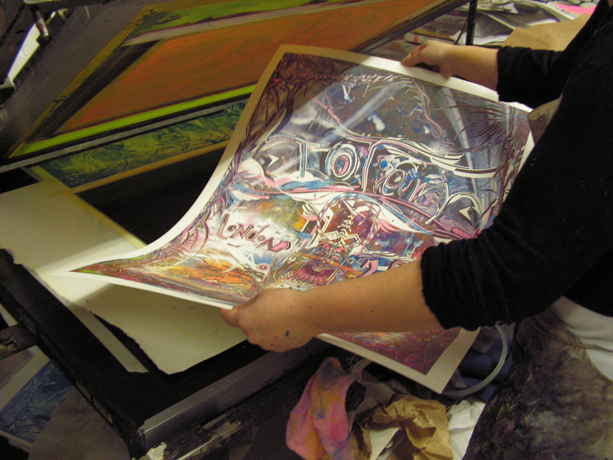
Why do you think street art takes so well to the screen printing process?
Screenprinting is a process that allows you to get multiples out of things, but it’s also about documenting. Street art doesn’t last for too long on the street so the best way to capture it before it gets buffed, while a canvas may take a long time, is to screenprint. It’s really is documenting it.
In addition, there is a trend at the moment where everyone thinks “Oh yeah lets put out a print, it’s going to be an instant hit, it’s going to sell out!” But, in reality, no it’s not! A good print isn’t about copying what’s on the street to make an instant hit. You just have to go into some print house or gallery, and you’ll see loads of editions just left over, that have cost thousands to make. It’s a silly way of thinking.
I just think you have to understand that not every single piece of work lends itself to being a screenprint. In fact, when I was talking to Glenn [Anderson], he said, for his work that’s so detailed with so many colours, he would like to start thinking like a screenprinter and how images can be broken down and simplified, almost like when you are trying to create stencils but with a lot more detail.
But an important point to consider is that most screenprinters would say that screenprinting isn’t a process that is for a full scale, full colour reproduction. It doesn’t lend itself to that. If you want that, you go to do a digital Giclee or opt for a more traditional process like Lithography. For me screen-printing is an interpretation of someone’s work and not a full scale photographic reproduction.
So it’s almost an art form within itself?
In the hands of a professional printer, yes, it can be an art form. It takes so long to get the colour balance right, the right separations and screen mesh, even the way you set up the hand bench contributes to the quality of the print. To actually produce 70 prints that you don’t have a finger mark on, especially when the paper has been in and out of the drying rack about 10 times – printing, drying, letting the paper breath, cutting it to size, it’s a long process. A real labour of love.

On the subject of some people turning to screenprinting with the aim of becoming an ‘instant hit’, I wanted to ask if would ever work with artists with that frame of mind?
Personally, I’m in a really comfortable, happy situation, where I only work with people who I want to and respect. That’s why I’m an independent printer, that’s my ethos, work with people who know about the process, who are true and can actually draw or paint.
You know, you can approach any print house though and they will knock anything out for you. I don’t think there is anything wrong with being an entrepreneur and using initiative to make money. But at the end of the day it’s the respect and the longevity that they probably won’t have. So you know, yeah a quick buck is good but your reputation is going to suffer or bring any longevity for your career as an artist.
You say you only tend to print for people you know or like, but do you ever end up printing pieces that you don’t personally like even though you like the artist?
[With a smile] I have done in the past, yep, quite a lot, you call it your “bread & butter” jobs, we all have to pay the rent! There are some people who really want me to do their stuff and I’ll have a time slot and I’ll think “Why not? Let’s do it.” But I might not gel with them, you know. Don’t get me wrong, there are times when I’ve done a print and they aren’t happy with it, it hasn’t looked the way they want it to. But that happens.
But on the whole they are happy?
Of course, most of the time they are happy. But you know what, I hate to say this, but when I’m printing something, I know fairly straight away if it’s going to sell or not. But my clients never ask me that, most just want to see the finished print. Although if I am close with the artist I do offer my professional opinion sometimes.
Is that based simply on aesthetic value or as a printer do you possess a more in depth understanding view?
I’ve had my own business for over 7 years. I started on various market stalls, grafting in the cold, and for 3 years did a lot of market research watching people’s faces and hearing the comments. So I kind of more or less know. That’s why when I release a print myself, I wait and wait and time it. I time it commercially. I more of less know when to release things, colours etc. I’ve got good experience in selling.
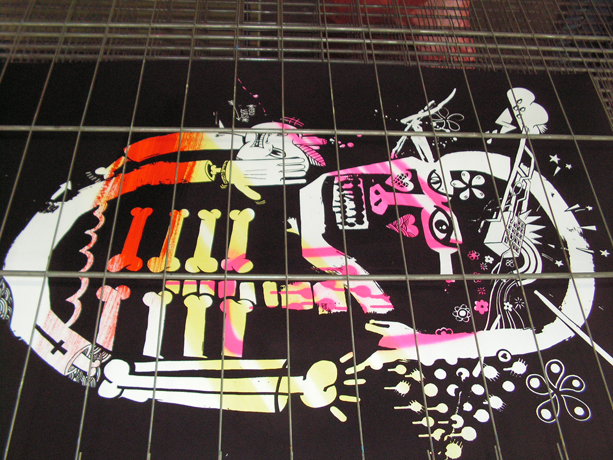
What impact do you think screenprinting has had on the street art movement and its commercialisation?
I think in the last 2 years, it’s played a really big part in the street art movement. For example Eine’s 70-odd colour print had a really big impact. It showed the versatility of screenprinting. I love the way you can take away a colour, bring a colour in, take some off the rack and just play around.
I don’t know whether you could call it kind of selling out for the street artist but I’m still toying with the idea of this fast buck and making a quick profit. In general, I still go back to thinking street art doesn’t last. I still think, for the pure people, it’s about documenting.
But I do know some street artists that are real craftsmen and craftswomen, who do their own print making and screenprinting. And I think if they do it themselves it’s a really good form of expression. However then you have people like POW that mostly release street artist’s prints and they have made a really huge business out of it. So I suppose they have had a really big impact on street art, they are the foremost forerunners in the market in my opinion.
So having a print with POW sort of means you have made it? It’s kind of a big deal.
It’s a really big deal, I would say a privilege to even be asked! The impact of POW in the screenprinting world for street art is huge.
But, the question is, what do you do after you have had a print with POW?! That’s the thing about screenprinting, its about producing multiples, it is so easy to get carried away and make so much art, flooding the market and having your prints left on the shelf. It’s such a sad thing when you look at a big stack of prints and realise only 30 per cent of the edition have sold, does this affect the collector who only buys a print as an investments?
So maybe the way forward with making street art prints is to make small editions, with a bit of hand finishing. But still, I think that a print should be affordable as that is why any type of print process was born to be. I think artists thinking of producing prints should remember this, unless they are a screen printing artist and only produce work in this medium. If you can’t afford to buy an original work of the artist that you like, you should be able to afford a screen print by them.
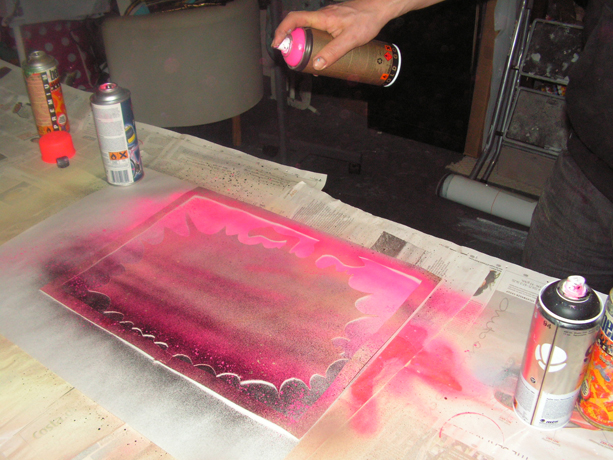
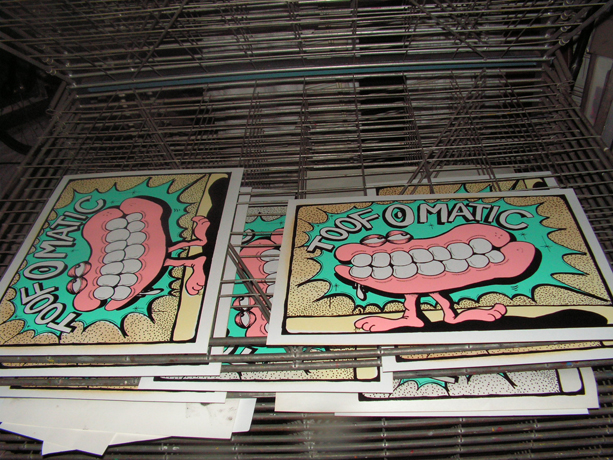
With regard your input, how much of a contribution do you have in the prints that you produce? Does this change if an artist just sends you a Jpeg?
If someone does actually send me a Jpeg or something, I’ve actually got a little disclaimer. I advise on the basics that a lot of people might not have had any experience of printing. I try to make it kind of friendly and put in layman’s terms of what you can get away with and what you can’t, the size of the image, shrinking it down and that kind of thing.
Sometimes I do get an image that just won’t be conducive to the screenprinting process. I have some impact in telling them to change it, but in those aspects the artist tends not to much. They tend to say just do this and that, end of.
But then, if I’m working with the artist in my studio and they just come in and do something, they do often ask me about colour, about size. When I was working with Nychos for his solo show for Pure Evil, I think we sat down for a couple of hours and discussed which image would work on what size paper, and then we discussed colour for about 2 hours with my little Pantone book. Whereas with someone like Lucas Price, we sometime improvise which is quite nice, we just try things out.
With the Safewalls project, I don’t think I’ve ever had this much creative input in doing something. I think they trusted me to do the best I could. I was given the images from the originals and told you can basically do what you want as long as you make it look really good. But then you get some artists, even down the phone, who say; “Just choose a green, pistachio green, that will do!” And your like “what do you do?!”
That’s a lot of faith in you!
Yeah, it’s a lot of faith. But that again is the core thing about what I believe – everyone should have a really good relationship with their screenprinter. It has to be a really tight relationship based on trust.
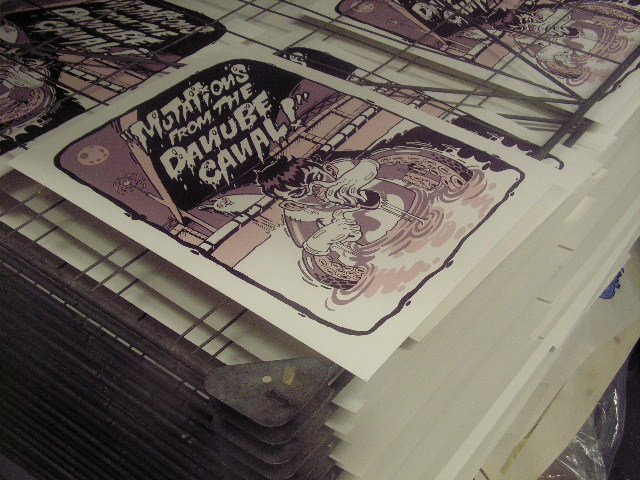
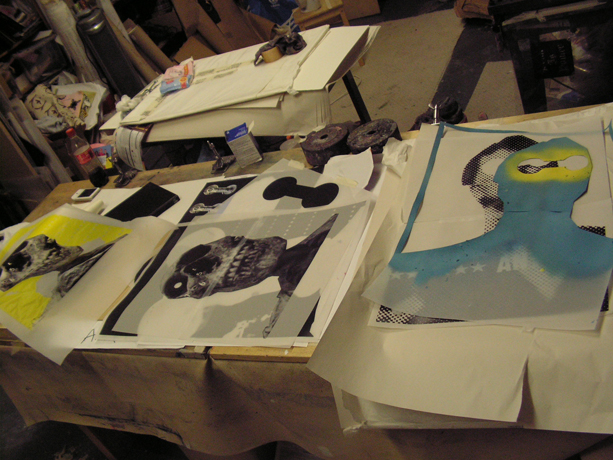
You work so closely to the artists but how do you feel about credit and credit for a print?
It’s fine. I’m just their printer.
Really?
I have no attachment. Nothing. I know, I’ve spoken to other printers that are artists as well, and they are always like “Well you know, your hand was in making it.” Sometimes an artist might just give me just a line drawing and I have to sit there physically by hand, because they might not use a computer, and a lot don’t, tracing and doing stuff on drafting film. I’ve more or less made it, I’ve separated the colours, I’ve tweaked it, and I’ve mixed the colours.
You really are the artist behind the artist then!
Sometimes, sometimes you are. But you know what; it’s not your work. You didn’t conceptualise it or draw it, you didn’t think of it.
But you produced it.
I produced it, like music producers do, but it’s the singer who gets the credit! And I enjoy producing work for people. I like the look on their faces when they see the finished work. And usually they will recommend me to other people. That’s my reward, it’s nice. I just like to help people out.
But to be honest, If I wasn’t doing my own art too it would be different. I think I would be quite frustrated. I know a lot of printers that are just in a print house from 9-8 or whatever, who are just printing other peoples work and it gets you down.
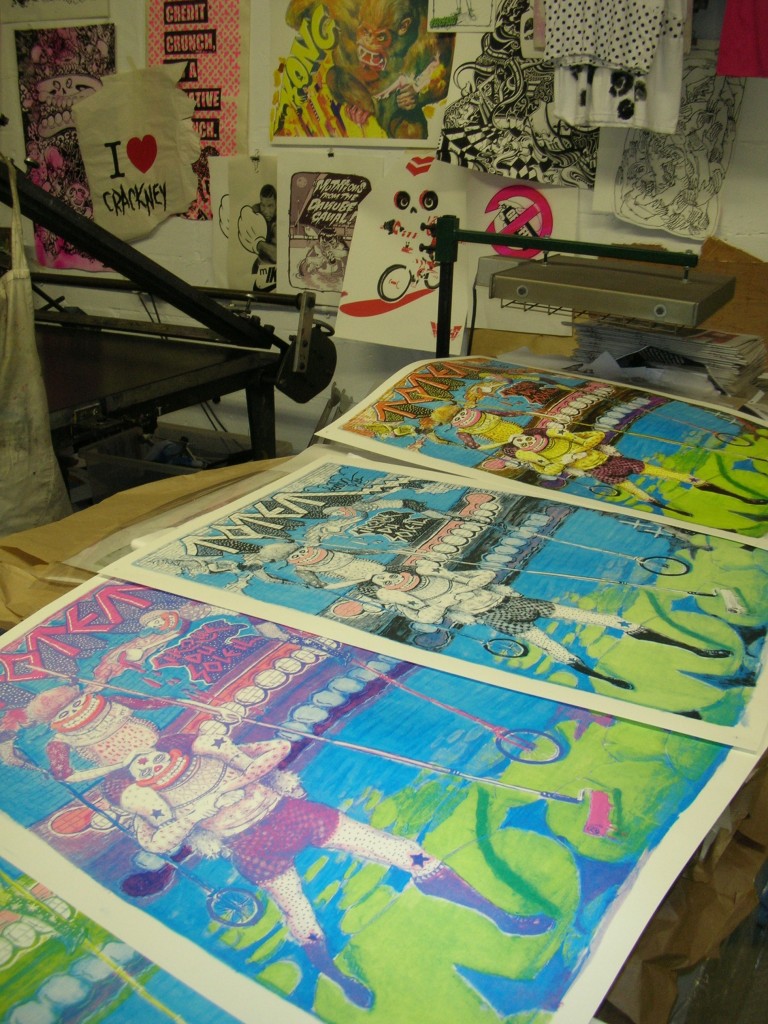
You have obviously worked with many successful artists, but what would you say is your biggest achievement?
This is going to sound stupid, but when I was 19 or 20, I always had an idea of what I wanted to do and I always knew I would work for myself as I was such a control freak. And when I was about 21 or 22, when I was graduating, I wrote a little manifesto about keeping it real and being true to one’s self – lots of arrogant views on mass consumerism, and you know, creating something niche but something that I was always going to make a living out of. At the end of the day why do you work? Or why do you believe in your craft and want to better yourself?
It’s to be successful, make your family proud, and if you can make a living out of it, that’s a bonus. And I think that’s my biggest achievement, that’s what I’m proud of. Going back to my core beliefs, I’ve tried to maintain this. I’ve met some of the best, most talented, hard working people in the world and I’ll be meeting loads more, I hope. I’m still making a nice living by doing what I’ve always set out to do.
That doesn’t sound stupid, just pretty grounded and level headed. One final question, who are you inspired by and why?
I’m inspired by all the people I meet and work with every day. Every different person I meet brings a new thing to the table. Like when I met Glenn [Anderson], I thought “Wow.” You look at his pieces, you look at his detail and you think “How do you do that?!” Or you take little Nychos and you look at his walls and again you just think “Wow.” I’m amazed by everyone I meet everyday.
If you would like to know more about Aida, or check out Brag Clothing, then head over to the newly refurbished Aida Prints website. And if she runs another workshop then I highly recommend heading along, but in the meantime you can read up about last years High Roller event thanks to a great review by NoLionsInEngland over on Graffoto Blog.
Photos by Aida, High Roller Society and Shower.
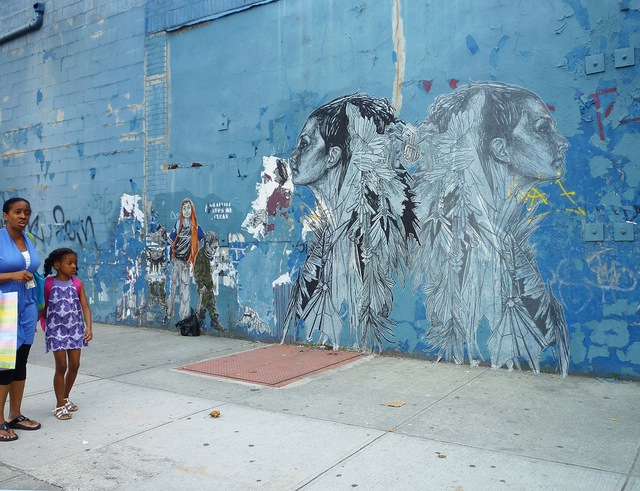
A day late, but here’s the link-o-rama. Let’s just say it feels like I’ve been competing, exactly one year on, with Ben Eine for the title of having had the strangest week. Here’s what I’ve missed:
Photo by Sabeth718